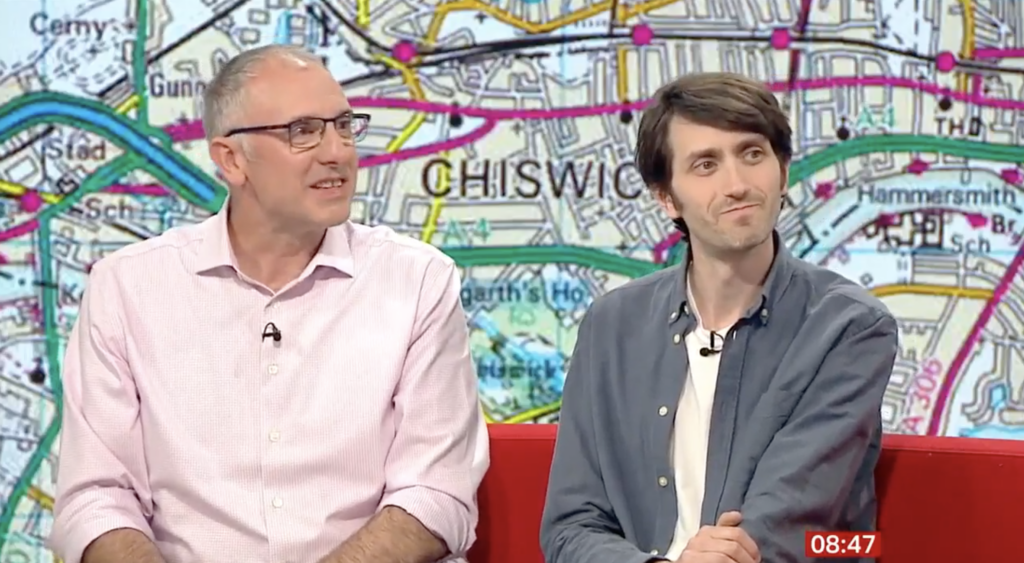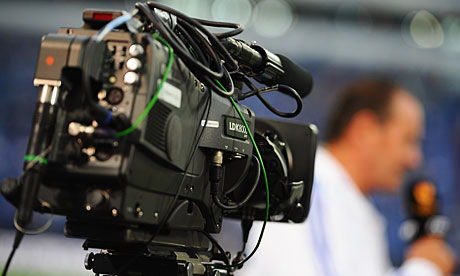Ask a client what makes a successful campaign and Broadcast PR is likely to be at the top of their wish list. But if budgets and/or logistics are limited, and you have to pick one, which is better: radio or TV? In an ideal world you’d have both! But if you have to choose, you need to consider the story, audience and goals of the client before deciding which is the best fit for your campaign.
In this post, we compare TV versus radio for PR opportunities, exploring the advantages and disadvantages of each broadcast media platform. Let’s look into the pros and cons of both.
Radio vs TV
Radio PR gives you the opportunity to reach a massive audience. 48 million of us in the UK listen to the medium each and every week. A successful radio PR campaign is likely to include a wide variety of stations, BBC and commercial, regional and national.
But that mass audience can be fragmented to suit your needs BBC regional radio, for example, tends to have an older age profile around 45 and upwards, whilst commercial radio stations often appeal more to a younger audience. Heart has more female listeners meanwhile, and Radio 5 Live more male.
Radio is an intimate medium. It feels like a conversation, presenter to listener. In the same way you wouldn’t pull away when you’re chatting to someone, radio is engaging and pulls a listener under its spell.
It’s immediate, which is why people turn to radio when there’s a big breaking news story. They know they can get the most up to date information, but they also know it will be trusted information.
The intimacy of radio also means the medium is open to all sorts of sensitive subjects, particularly medical and personal ones, that you might not get coverage for on television. We’ve had broadcast campaigns talking on everything from dementia and menopause, to marital affairs and erectile dysfunction.

Live interview opportunities
Live radio particularly offers fantastic opportunities for a spokesperson or case study to secure key client messages and solid branding. You might be surprised at the length of the chats which vary from a couple of minutes on a BBC regional breakfast show, to several minutes on BBC shows later in the day, and smaller commercial stations.
Recorded interviews
Live radio particularly offers fantastic opportunities for a spokesperson or case study to secure key client messages and solid branding. You might be surprised at the length of the chats which vary from a couple of minutes on a BBC regional breakfast show, to several minutes on BBC shows later in the day, and smaller commercial stations.
Radio is guaranteed
You know what you’re getting with radio. We guarantee our coverage, typically a minimum of 10-12 opportunities, 1-2 of which we expect to be nationals, with a reach of a million listeners. In reality we typically exceed targets, and 17-18 opportunities, with a reach of 3-4 million people, is more likely.
So when you’re weighing up, radio or TV, this is really worth remembering.
Radio is more reliable than TV anyway. Radio programmes are often 3 hours or longer, so even with a breaking news story, there’s room for manoeuvre. And the sheer amount of UK radio stations means we’re always going to get to target, no matter how busy the news agenda is.

Radio is cost effective
PR research works well on radio and is a cost effective way of generating some good content. It doesn’t work so well on TV which needs pictures to illustrate a story. A good top line, some regional breakdown which will interest local stations alongside a good spokesperson and you’re ready to go.
The need for a good spokesperson
A word of warning though – good spokespeople are key for radio as they need to work in messages clearly and succinctly in an entertaining and engaging way. They should be able to paint a picture with words, as well as casually but relevantly drop a brand mention or key message into an answer.
As we mentioned above, radio programmes enjoy a conversation. Whilst you still need to weave your key messages into any interview, most radio shows want their guests to be chatty – not too long winded, not too short with their answers – and informal.
Now for television versus radio....
For many clients though TV is the icing on the cake. Younger people may be getting more of their news online, meaning TV audiences are slowly evolving, but television still reaches millions, it is influential and prestigious.
TV opportunities are also hard won, a rarity which perhaps makes any interview valued even more than radio.
Seeing a case story, rather than just hearing them, can be more emotionally engaging than just hearing them on radio. That makes the viewer more involved and more receptive to PR messaging.
Television PR challenges
TV slots are hard to come by. There’s less air-time than there is on radio open to PR stories, therefore competition to secure an opportunity is intense. The majority of the stories we place on TV are on news programmes, which have strict schedules to adhere to. BBC Breakfast is on-air for three hours a day, from 0600 to 0900, but news bulletins tend to last only 30 minutes and less in the case of ITV and Channel 5, who include an advertising break within that time too. Competition to get on-air is fierce!
Occasionally we’ll place a spokesperson on ITV’s This Morning, GMB or programmes like The Apprentice. The former though often refuse to give any branding credits and the latter takes a long time to set up, so news is generally a better option.
And even when you do get on air, air time is often very short. This means that in a live interview you need to get branding and messages out quickly and concisely; with pre-recorded clips the branding is more likely to come in the form of an aston – words on the screen, most likely a reference to a client’s position and company.
Spokespeople need to be excellent, up for the challenge of being seen as well as heard. It’s nerve wrecking for the best of spokespeople and media training before a TV opportunity is highly recommended.

The need for great visuals
Often a picture does tell a story. That means more effort from the PR side, offering journalists either the opportunity to film for themselves, or B-roll which illustrates a PR story. B-roll is 6-8 minutes of roughly edited footage that is produced by agencies like Shout! Communications on behalf of clients. We distribute the B-Roll to broadcasters, free of charge and any copyright issues, for them to re-edit and illustrate a PR story. For more information about B-Roll click here:
Good visuals, however, can be the difference between a story getting on-air ….or not. B-Roll is lovely to have, because it makes the life of a PR person and a journalist easier, but if there aren’t the resources for that think about what a TV crew could film themselves. You know your brand better than they do, so you might come up with some better ideas of how they might illustrate a story.
Don’t forget regional TV
Regional TV should not be overlooked either. Cutbacks over recent years means regional newsrooms have merged together and have become super patches, covering large areas of the country. As much work, however, is required for regional TV as is needed for nationals. They demand ingredients that are tailor made for their region – including spokespeople, case studies and local facts and figures.
Spokesperson availability
A mixed campaign of radio and TV can be hugely effective, but make sure spokespeople and case studies are available on the day of the story and the day before. Balancing all coverage between TV and radio can be tough. It is useful to have multiple spokespeople and decide who you want for what and where they will be so you are able to fulfil all coverage demands and maximise your campaign’s potential.
Remote TV and radio interviews
Adding to the logistical complications is the fact many broadcasters still prefer conducting interviews remotely. That’s fine for radio – clients and spokespeople generally prefer this. But if you have a TV opportunity, requiring a spokesperson to go into a television studio you could consider our pop up radio studio service. That’s comprised of all the kit, including microphones and a sound desk, needed to do a professional broadcast interview, which we bring as close as possible to any TV studio interviews. We can set up in an office, a hotel, wherever is convenient.
Can’t decide which to go for or how to manage both?
Have a look through some of our case studies here: https://shoutcommunications.co.uk/our-work/
Or call 020 7240 7373 to talk through your next campaign.




